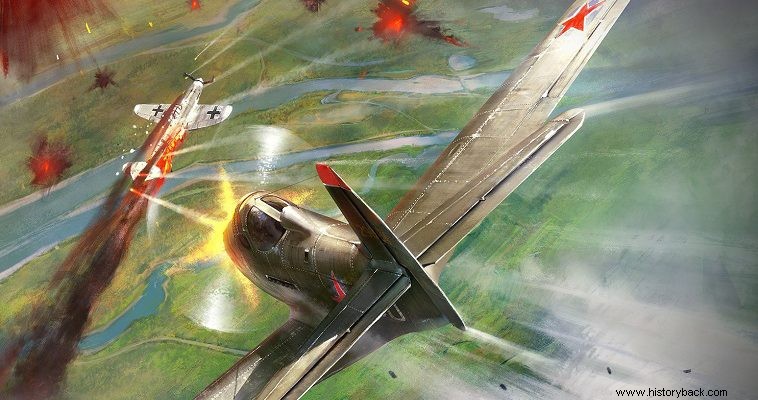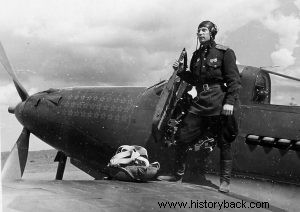
Bell's P-39 Aircobra had many unique features. It was the first fighter with a tricycle landing gear while the engine was located behind the cockpit. Also, the aircraft carried as a basic armament, in addition to the four 12.7mm machine guns, a 37mm cannon, one shot of which was capable of destroying any enemy aircraft, even a heavy bomber.
A total of 4,719 fighters of the type were delivered to the Soviets at a time when domestic fighters had not yet reached such a level of development that they could face the superior and tactical German air force.
The Soviets received mainly P-39 and P-39Q. Aircraft were delivered via Alaska and Persia. The P-39 was an excellent aircraft at medium and low altitudes, which is where most air battles took place on the Eastern Front. Conversely the aircraft did not perform as well at high altitudes.
It was robustly built, with a spacious and ergonomic cockpit which Soviet pilots loved as the cockpit of Soviet aircraft was the complete opposite. The cockpit of the P-39 even had heating, while entry into it was through a car-style door.
Also a significant advantage was provided by the excellent radio set (transmitter and receiver) that it had in contrast to the Soviet aircraft of the time that either did not have a radio receiver at all, or only had a radio receiver, for a long period of the war. Finally, the aircraft had high performance and the main heavy armament, while it could also carry bombs.
With a maximum speed of 625 kilometers per hour, the P-39 had no problem dealing with the German Stukas, as well as the Me-109E fighters, as well as those of newer versions. Furthermore, the Americans later provided the Soviets with 2,397 (2,672 according to other sources) of the improved P-63 King Cobras.
Soviet pilots literally loved the advanced, compared to what they had seen, American fighter and used it both in pursuit missions and against ground targets. The P-39 could easily destroy even the heaviest German tanks with its gun, hitting them from behind. Surprisingly, the Soviets did not take advantage of this ability.
Thanks to its robust construction, it could withstand multiple hits, increasing the pilot's chances of survival. That's why Soviet pilots affectionately called it "kobrula" or "dear little cobra".
Aces and takedowns
The first P-39s delivered to the USSR were armed with one 20mm cannon and two machine guns. Soon, however, the more heavily equipped models were delivered with the 37mm M4 M4 cannon and the four machine guns.
It is worth noting that top Soviet aces became aces thanks to the P-39. Aleksandr Pokryshyn achieved 48 (47 according to other sources) of his 59 kills flying P-39s and an additional 6 in common, as did Nikolai Gulaev (41 of 57), Grigory Rekalov (44 of 56), Dmitry Glinka (41 out of 50), Boris Glinka (31 out of 31) kok. Of the top 10 Soviet aces of World War II, only one did not fly a P-39.
Pokryshyn achieved 20 victories with the American fighter during the Kuban battle alone. Also P-39 was the last Soviet aircraft shot down during WWII (on May 8, 1945 by a German Me-262 jet), but P-39 was also the aircraft that achieved the last Soviet shoot down in Europe , in WWII (a German Focke Wolf 189 on May 9, 1945 over Prague).
A total of 1,030 of the P-39s delivered to the USSR were lost in combat or in accidents/accidents. It is worth mentioning that American fighters continued to operate in Soviet colors even after the start of the Cold War, with the latter being withdrawn in 1949.
The first air regiment to use them was the 298th achieving 167 kills in 111 engagements. Also notable was the 16th Guards Aviation Regiment where Pokryshyn and Rekalov served.
The 153rd Air Regiment also, in three months, used the P-39 in 45 air battles, shooting down 64 German aircraft with the loss of 8 of its own. The same regiment, between December 1942 and August 1943, used the P-39 in 66 air battles, destroying 63 German ones, including 23 Me-109s and 23 of the excellent FW-190s.

Soviet ace Alexander Pokryshyn in his P-39 aircraft with his victories marked on the nose.
